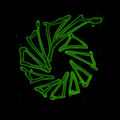Template:Selected anniversaries/October 3: Difference between revisions
No edit summary |
No edit summary |
||
| Line 56: | Line 56: | ||
||1986: TASCC, a superconducting cyclotron at the Chalk River Laboratories, is officially opened. | ||1986: TASCC, a superconducting cyclotron at the Chalk River Laboratories, is officially opened. | ||
||1990: Res Jost dies theoretical physicist, who worked mainly in constructive quantum field theory. | ||1990: Res Jost dies ... theoretical physicist, who worked mainly in constructive quantum field theory. Pic. | ||
File:John Crank.jpg|link=John Crank (nonfiction)|2006: Mathematician and physicist [[John Crank (nonfiction)|John Crank]] dies. He worked on the numerical solution of partial differential equations; his work with Phyllis Nicolson on the heat equation resulted in the Crank–Nicolson method. | File:John Crank.jpg|link=John Crank (nonfiction)|2006: Mathematician and physicist [[John Crank (nonfiction)|John Crank]] dies. He worked on the numerical solution of partial differential equations; his work with Phyllis Nicolson on the heat equation resulted in the Crank–Nicolson method. | ||
Revision as of 17:10, 5 November 2019
1842: Mathematician Arthur Cayley admitted to fellowship at Trinity College, Cambridge, at age 21, younger than any other fellow at the College.
1881: Mathematician and religious leader Orson Pratt dies. As part of his system of Mormon theology, Pratt embraced the philosophical doctrine of hylozoism.
1882: Canterbury scrying engine reprogrammed to detect and expose crimes against mathematical constants.
1891: Mathematician Édouard Lucas dies. He studied the Fibonacci sequence; the related Lucas sequences and Lucas numbers are named after him.
1930: Mathematician Robin Farquharson born. He will write an influential analysis of voting systems in his doctoral thesis, later published as Theory of Voting.
2006: Mathematician and physicist John Crank dies. He worked on the numerical solution of partial differential equations; his work with Phyllis Nicolson on the heat equation resulted in the Crank–Nicolson method.
2012: Physicist and astrophysicist Robert F. Christy dies. He is generally credited with the insight that a solid sub-critical mass of plutonium could be explosively compressed into supercriticality, a great simplification of earlier concepts of implosion requiring hollow shells.
2018: Green Spiral voted Picture of the Day by the citizens of New Minneapolis, Canada.







